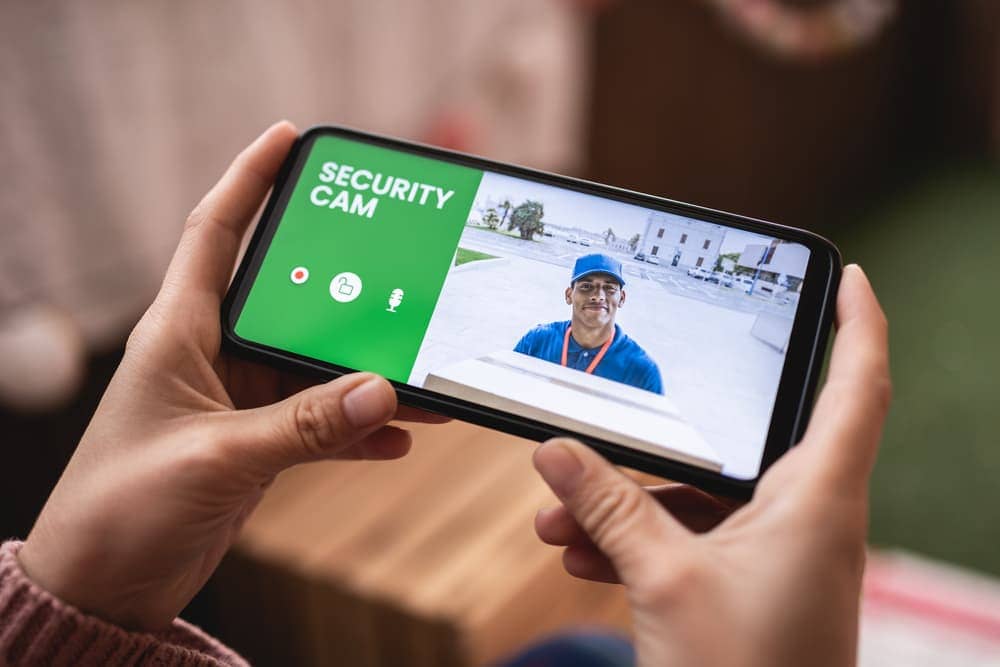With crime behind every corner, more and more people are looking for ways to secure their homes or properties. A popular way to do it is by installing a hidden security camera for the home inside and outside of the house. It’s not a surprise since they allow you to see what’s happening in your home, whether you’re there or not.
But how do they do it? Explore with us how security cameras for home work, their differences, and advantages so you can choose the best one (or more) for your security needs.
What Is a Hidden Security Camera for Home?

A hidden security camera for home is a video recording device recording what’s happening in your house or yard. You can see what it captures on your computer, smartphone, or any other device with an internet connection.
Most hidden security cameras are motion-activated, meaning they record when they detect motion and notify you. Some cameras are CVR (continuous video recording) and can record all the time.
Generally, homeowners like to keep an eye on their homes. Knowing you can see any potential incidents or who’s at the front door brings relief and peace of mind. And home security cameras offer that, making them excellent devices for providing security.
Do Hidden Home Security Cameras Work?
The hidden security cameras for home work. But, how successfully they work depends on what they are used for. For example, they can discourage thieves from entering your house if they notice it.
However, if you think you might be able to catch one with the help of these cameras, you’d be wrong. Why? Because thieves usually wear a hoodie or a mask. They know that more people have hidden security cameras, and they aren’t taking chances. So, these cameras don’t work well for thief identification purposes, but they can scare them off.
Nonetheless, having video evidence of burglary can help accelerate insurance claims. Moreover, a growing number of police departments are partnering with home security companies, meaning you can share your footage with the police immediately.
Besides general security, hidden cameras do a great job of letting you know what’s going on in your house when you’re absent. With it installed in your home, you can have peace of mind while at work, knowing your dog is eating an expensive couch again instead of finding it out when you get home and experiencing a nervous breakdown again.
That’s not all. With features such as person detection, night vision, and two-way audio, you can see and speak to anyone in your house (even the dog) while you’re not there.
How Hidden Security Cameras for Home Work
There are two types of hidden security cameras for the home - wireless and wired. Wired security cameras are wired to either DVR (digital video recorder) or NVR (network video recorder). The wired camera has a cable running from an on-site video storage device for power and sending footage. These cameras don’t use Wi-Fi, but you can connect them to the internet with an ethernet cable and view footage remotely.

On the other hand, wireless surveillance cameras use Wi-Fi to send footage to a cloud-based server, allowing you to see it on any device with the internet. However, most wireless security cameras aren’t completely wireless as they need to be plugged into AC (alternating current) power via cable. Still, some use rechargeable batteries.
Wireless home surveillance cameras are often called smart cameras. You can control them with an app and integrate them with smart home systems and devices such as Google Assistant, Amazon Alexa, smart lights, speakers, locks, etc.
The Difference Between Wireless and Wired Security Cameras
Both wireless and wired cameras provide you with security and have their advantages. However, they operate differently and offer different features and levels of security. Discover more below.
Wireless Security Cameras
Wireless security cameras for home communicate with your router or the base station of your home security system via Wi-Fi. If you have several wireless cameras installed outside and inside your house, they will all connect to your Wi-Fi, generally through the router.
Some use a bridge or hub that plugs into your internet modem, still using Wi-Fi but operating on their network. Wireless cameras also use Bluetooth, but typically, only to communicate with your tablet or smartphone during setup.
Wi-Fi provides a direct internet connection to the cloud-based storage system for the camera. When activated, they’ll instantly send their footage to the cloud, meaning that even if a burglar snags your camera, you’ll have access to the footage. In addition, cloud-based storage lets you see recorder or live footage remotely on your computer, tablet, smartphone, or other devices with an internet connection.
A wireless security camera is easy to use but demands a solid Wi-Fi network. If you want to use several wireless cameras in your home, ensureWired security cameras for home don’t depend on internet connection or Wi-Fi. Instead, they use a wired data connection to communicate with an NVR or DVR. The major difference between the two is that the NVR processes footage directly on the security camera, while cameras send their footage to the DVR to process. you have an excellent router and a high-speed connection. Otherwise, the picture can distort, and the camera can go offline repeatedly. Note that wireless cameras can be hacked. Nonetheless, securing your router and camera with a strong password will prevent that.
Wireless security cameras completely depend on Wi-Fi. So, if your Wi-Fi goes down, the security system won’t function.
Wired Security Cameras
Wired security cameras for home don’t depend on internet connection or Wi-Fi. Instead, they use a wired data connection to communicate with an NVR or DVR. The major difference between the two is that the NVR processes footage directly on the security camera, while cameras send their footage to the DVR to process.
NVRs are slowly replacing DVRs, as they are more modern technology. Moreover, NVRs work both with wireless and wired cameras, but only from the same manufacturer.
A wired system provides more reliability than a wireless one, and that’s its main advantage. If you can wire your home security camera to a network connection, it’s better to do it. This way, you improve your speed and minimize connectivity issues.
Wired cameras always have a strong signal for sending footage to an NVR or DVR and then the internet. For that reason, they are much more reliable than their wireless counterparts. With Wi-Fi, sometimes it’s difficult to get continuous coverage and steady images all the time. But, with wired cameras, you don’t need to worry about these issues.
In addition, you can keep wired security cameras online with backup batteries if the power goes off. Moreover, the wired system can’t be hacked as easily as wireless, even with an internet connection. Although the setup is more complicated, a wired security system offers unparalleled levels of security.
Stay Safe with Hidden Security Camera Systems for Home
Wireless or wired, it’s better to have one than none. Nowadays, with crime behind every corner, you can never be too safe. Hidden security cameras prove very effective in deterring opportunistic thieves, and they aren’t as expensive as they were in the past. Having one or several installed inside and outside your home will give you the peace of mind you need.
Not only will they do a great job in preventing burglars, but they also allow you to keep an eye on your children or pets when you’re not at home.
However, these two types of security cameras operate pretty differently, and it’s crucial to know their differences so you can choose the one that will suit your needs. After reading this article, you discovered what you need to know about how they work, which should help you decide.